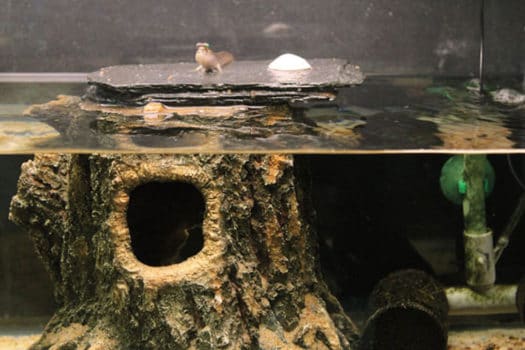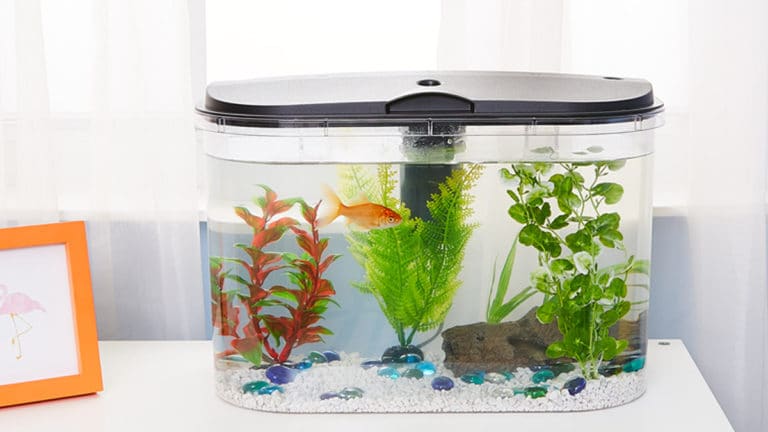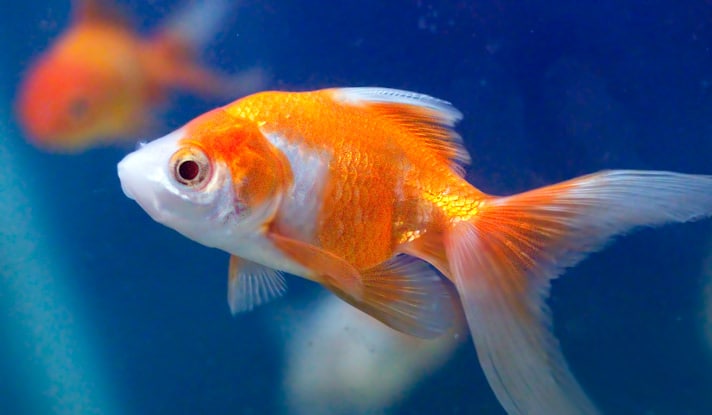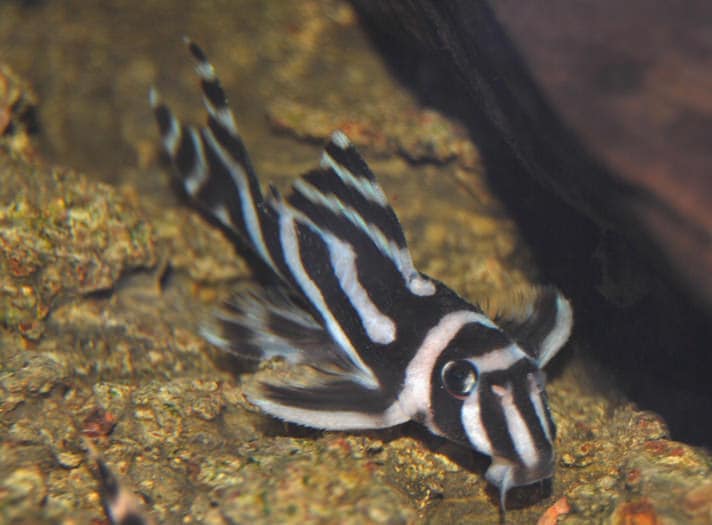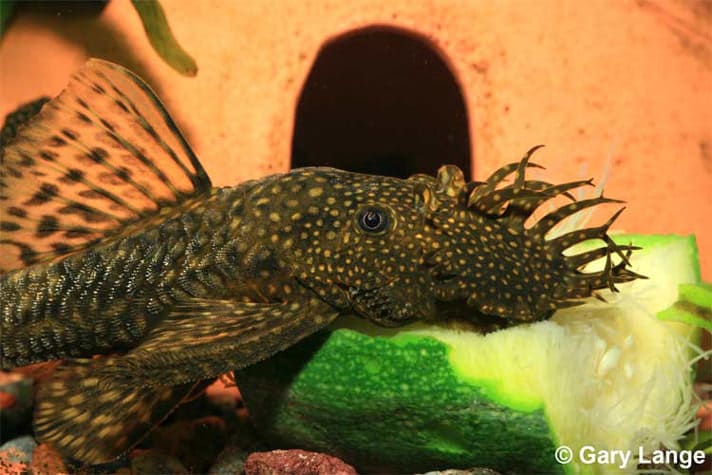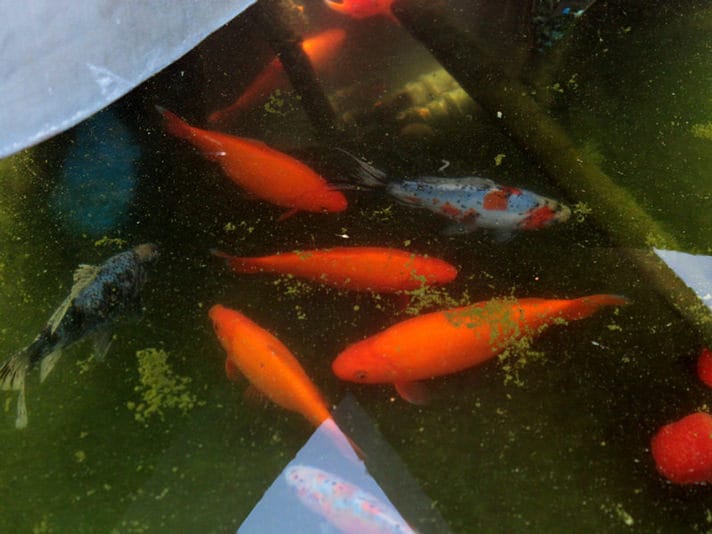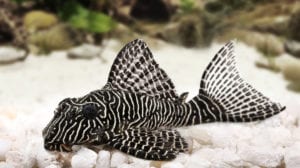The receding tide slowly uncovers a vast mudflat and creates a flurry of activity from scurrying crabs, swooping gulls and unusual fishlike animals scampering from newly exposed holes. Some of these little fish awkwardly swagger, moving only an inch at a time, while others seemingly spring forward as if propelled by springboards. These extraordinary fish are mudskippers.
Mudskippers are in the Gobiidae family in the Oxudercinae suborder. Of the 10 mudskipper genera, four species are highly amphibious and spend much of their lives on land. Two of the most common genera available to hobbyists are Periophthalmus and Periophthalmodon.
Mudskippers are Old World fishes and originate in tropical intertidal mudflats and brackish mangrove estuaries, from the Atlantic Coast of Africa east through the Indian Ocean to the western Pacific. The name “mudskipper” derives from the mudskipper’s ability to use its tail and body for skipping and hopping on land. They also use their muscular pectoral fins in an alternating manner, called “crutching,” to produce a gawky movement resembling a person on crutches. It is simply amazing to watch these fish deliberately exit the water, move to a rock or log, and bask in the warm overhead lighting like a turtle would.
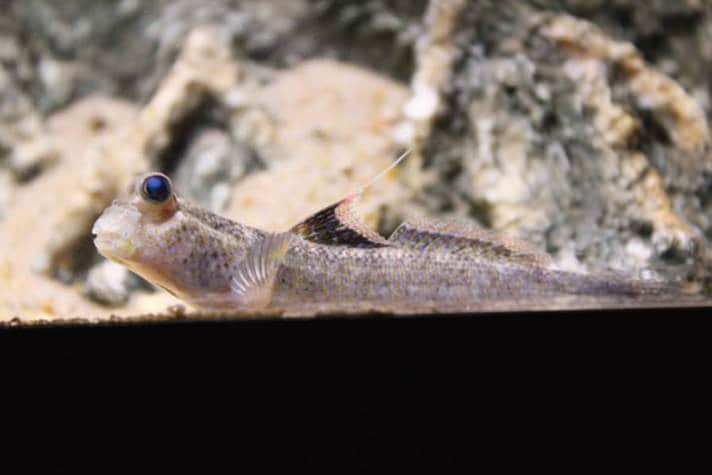
The amphibious capabilities of mudskippers are the result of adaptations such as strong pectoral fins, oxygen absorption through the skin and throat lining, and water pockets under the dermal cups for remoistening the eyes. Photo by Stephen G. Noble
Like their totally aquatic cousin, the bumblebee goby (Brachygobius doriae), which is also in the Gobiidae family, mudskippers are capable of creating a vacuum effect with their pectoral fins that allows them to attach to vertical objects. The pectoral fin vacuum mode of conveyance also lets them climb out of their fish aquarium, necessitating a very tight lid. Personally, I struggled with this problem because it prevented a much-desired open-topped aquarium and kept me from using my tall mangrove trees.
Their fantastic amphibious capabilities are the result of physiological and behavioral adaptations. This truly unique fish is capable of extended terrestrial visits because of its strong pectoral fins for mobility, oxygen absorption through the skin and throat lining, and water pockets under the dermal cups to periodically remoisten the eyes. In order for the amphibious mudskipper to thrive in captivity, it must have a place to climb out of the brackish water into very warm, humid air. Understanding their capabilities is the key to successfully providing good stewardship and enjoying many years with these wonders of nature.
Natural Habitat
Mudskippers are brackish fish. Brackish water occurs in estuaries, which are dynamic environments with the specific gravity (salt content) affected by tides, evaporation, rainfall and drainage from rivers and streams. Most of the mudskippers sold in pet shops come from water with a specific gravity ranging from 1.003 to 1.015. Because mudskippers are adaptable to an ever-changing environment, they are highly tolerant of various degrees of salt in their aquarium water.
Additionally, mudskippers are able to live in water that would be totally unsuitable for most fish. While this is not desirable and is certainly no excuse for neglect, they can survive for a while in water containing high concentrations of ammonia. Water that has low oxygen levels is no problem because the mudskipper obtains most of its oxygen from the air.
Behavior and Owner Responsibility
My research indicates that virtually all mudskippers are taken from the wild. As a result, we have an obligation to provide the best possible care and conditions for them in aquaria. Mudskippers are territorial, need plenty of land space and are best kept alone, unless a very large (48-inch-long) aquarium is used. My advice to those who have not had mudskippers is to be prudent and only keep one. They are aggressive, and a bully can seriously harm or kill another mudskipper. Finding a home for a mudskipper is not always an easy thing to do, especially when potential adopters hear of the fish’s propensity for climbing out of the tank.
Tankmates
Mudskippers should be kept alone because of their unique living requirements. There are a few fish compatible with mudskippers, as long as the tankmates are not aggressive, considerably larger or smaller, or require different water conditions. Provide high-quality and sufficiently deep water for mudskipper tankmates. Furthermore, ensure that all fish get enough to eat, which can be difficult to do. Good tankmates include:
(1) Mollies
(2) Guppies
(3) Knight goby
(4) Archerfish (Archerfish are for the more experienced hobbyist. These fish will directly compete for the same live foods provided to the mudskippers).
Creating a Home for Your Mudskipper
I will present three how-to mudskipper habitats ranging from a simple floating dock aquarium to a partially filled beach tank and finally an ornate paludarium. Each has its advantages and disadvantages and largely depends on the level of effort you are willing to devote for long-term care of your mudskipper. Use the following guidelines for all three types of mudskipper tanks:
* Use an all-glass or acrylic aquarium that will not corrode from salt exposure.
* Maintain the water and air temperatures between 75 and 85 degrees Fahrenheit. Submersible heaters with a guard to prevent burns are ideal. Use a thermometer to monitor the water temperature.
* Provide sufficient land area for the fish to spend most of its life. The mudskipper spends relatively little time in the water.
* Provide a tight cover for the aquarium. I recommend glass or clear plastic. Screen tops are not acceptable because they vent humidity that is essential for the mudskipper’s health.
* Ensure they have brackish water with a specific gravity (SG) between 1.003 and 1.015. (See the “Making Brackish Water” sidebar for more.)
Making Brackish Water
Here are seven easy steps to making brackish water.
(1) Fill a plastic bucket with fresh water to about half full, leaving sufficient space for adding salt and “slosh” room.
(2) Circulate the water with a powerhead.
(3) Mix 1 cup of marine aquarium salt (not cooking or aquarium salt) and fresh water in a quart glass measuring container.
(4) Add saltwater a little at a time to the bucket and let the powerhead mix the solution for a few minutes.
(5) Test the bucket water with a hydrometer after each addition of saltwater to measure specific gravity.
(6) When the desired salt concentration is reached, add conditioner to remove chlorine and chloramines from the water.
(7) Continue the powerhead circulation and add a submersible heater to bring the water to the desired temperature.
Notes: Avoid radically changing the specific gravity of your water during partial water changes. Small variations of specific gravity are fine and encountered by these fish in nature. Be sure to test your tank’s specific gravity prior to conducting water changes because even though the tank is covered, some evaporation is certain to occur. The salt does not evaporate, resulting in a slowly rising specific gravity. Specific gravity needs to be considered when preparing replacement water.
Three How-to Habitats
The following habitats range from being easy to maintain to more complicated, with the paludarium setup being the most complicated. (For diagrams showing the layouts of each of these setups, see the “Mudskipper Tank Diagrams: Top Views” sidebar.)
1. Simple habitat.
A simple mudskipper home includes a bare-bottom, partially filled 20-gallon-long aquarium outfitted with a floating log, piece of cork board or turtle dock. The turtle dock is a decorative block of foam looking much like a log. It attaches to the aquarium glass with suction cups, adjusts to varying water depths and is not dislodged by the water current. A simple sponge filter provides biological filtration and water circulation. The fish tank filters can be operated with an air pump or powerhead. The bottom of the tanks can be coated with a half-inch layer of sand. A decorative aquarium backing can be applied to the outside of the tank.
The primary advantage of this setup is ease of maintenance. The tank is easily vacuumed or wiped with a sponge. The disadvantage is a somewhat austere appearance. Plastic plants or rocks can be used as fish tank decorations, but this creates more maintenance by trapping debris and requiring movement during cleaning. Low-wattage lighting is sufficient.
2. Sand beach.
This setup uses a 20-gallon high (16 inches high) aquarium, play or swimming pool sand, rocks or logs, and a piece of Plexiglas.
Measure the inside width of the tank and cut the Plexiglas to fit snugly in place. The height of the Plexiglas barrier needs to be about 1 inch higher than the water surface (the depth of the water should be about 5 or 6 inches). Divide the tank roughly into thirds with the barrier inserted about one-third of the way across the tank. The divider can be held in place with aquarium sealant or simply propped up by logs or rocks. The sand must be cleaned prior to use (just like any other substrate), and then it is placed (not dumped) in the divided area that is to be the beach section to completely fill the space between the end of the tank and the Plexiglas barrier. Add a half-inch layer of sand to completely cover the tank’s bottom. Make sure that the mudskipper has easy access to this beach area by providing a branch that dangles from the beach into the water on the other side.
The middle of the tank is an ideal location for very small red mangrove trees (Rhizophora mangle) that can be rooted in decorative 3-inch (width and height) aquarium-safe pots. Fill the mangrove pots with a quality plant-specific substrate. Where room permits, add a log with some Java fern (Microsorum pteropus) attached. Use cotton thread to attach the Java fern. The Java fern should grow both submerged and emergently (due to the high humidity). A sponge filter hidden by the mangrove pots provides gentle water circulation. Lighting for this tank should be at about 60 watts to accommodate the mangroves. Maintenance of this tank is more complicated than in the first example. Care must be taken to ensure that the sandy beach remains clean (clean the beach area by pouring clean, treated water over it). Live plants require specific care and can trap debris. Higher-wattage lighting could encourage algae growth.
3. Paludarium.
Normally a paludarium is an ecosystem resembling a mini rain forest, but it can also be designed to replicate a bayou estuary complete with Spanish moss dangling from the trees. A mudskipper paludarium requires a 22- to 24-inch-high aquarium. Tanks that are 20 to 38 gallons at this height are typically called “show” or “extra tall” aquariums. Decorating possibilities include aquarium-safe cork covering the inside of the tank’s back and side glass walls. Many Microsorum pteropus and Anubias attached with either thread or aquarium sealant can adorn the covered walls. Small rocks and branches can also be attached to the background to provide a 3-D appearance. The idea is to completely cover the three walls with vegetation or decorations. Large branchy logs lining the walls are an alternative to the cork walls.
An unobtrusive canister filter provides circulation, and an in-line heater can be used with this filter. You can use the filter’s return to create a waterfall effect by using a spray bar positioned at the top of the tank just under the glass lid. The plants will love the water spray. Another option to canister filtration is an in-tank powerhead-driven sponge filter. Route the filter’s return just as you would for the canister filtration. An internal submersible heater is also required with powerhead filtration. It might be possible to grow a small bromeliad plant in an area of the tank that does not receive salt spray. Bromeliads are beautiful plants that like high humidity but not salt.
The beach area for the mudskipper can be as large as a third of the tank and is constructed from Plexiglas as in the second example. The beach can be crescent, diagonal or any shape you desire. Another idea is to use a large, very branchy log positioned in the center of the tank rather than a sand beach. Lighting for your paludarium would ideally be about 20 watts. Maintenance of this aquarium is the most complicated. The mudskipper is an amazing fish species that is ideal for hobbyists of all skill levels. With just a little preparation, this fish is easy to keep and will quickly become a very popular member of your family.
Mudskippers at a Glance
Scientific name: Periophthalmus and Periophthalmodon species
Diet.
Fruit flies, tiny worms, live brine shrimp, frozen fish food and occasionally a live newborn cricket treat. Even though they beg, don’t be tempted to overfeed your mudskippers.
Breeding.
Male mudskippers create J- or Y-shaped burrows as deep as 2 feet in the mud. Using dancing movements and acoustical communication, the male then entices a female to enter the tunnel and deposit her eggs. After she enters, the male plugs the entrance with mud, which isolates the couple. This is likely the reason why mudskippers have not bred in captivity. Trying to replicate such conditions would be well beyond the capabilities of most hobbyists.
Life span.
If provided excellent care, it is not unreasonable to expect your mudskippers to live at least five years.
Availability.
Some pet shops occasionally carry mudskippers. It is best to first set up your tank and then special order the fish.
By: Stephen G. Noble; He has 35 years of experience propagating aquatic, marsh and terrestrial plants. His tanks range from natural to high tech.
Share:
